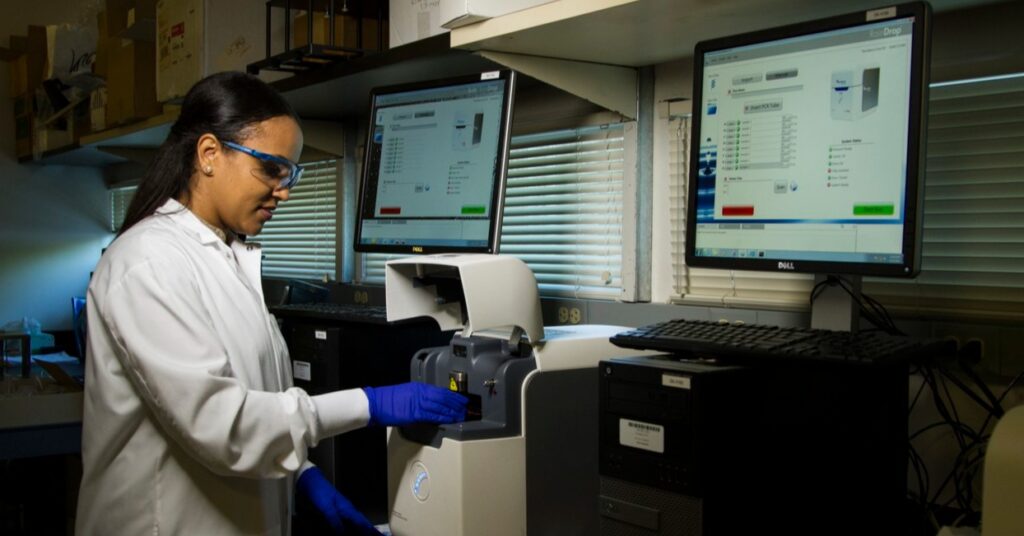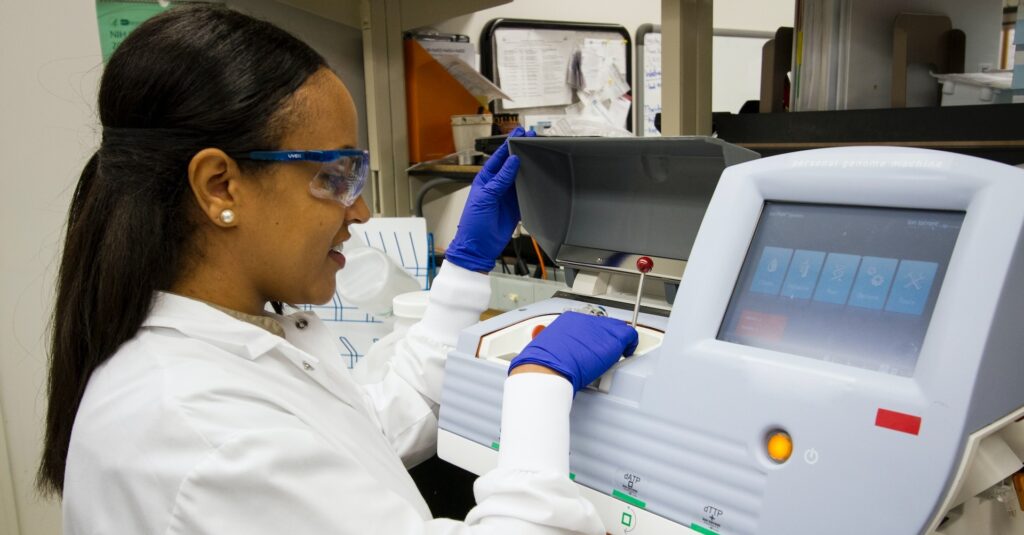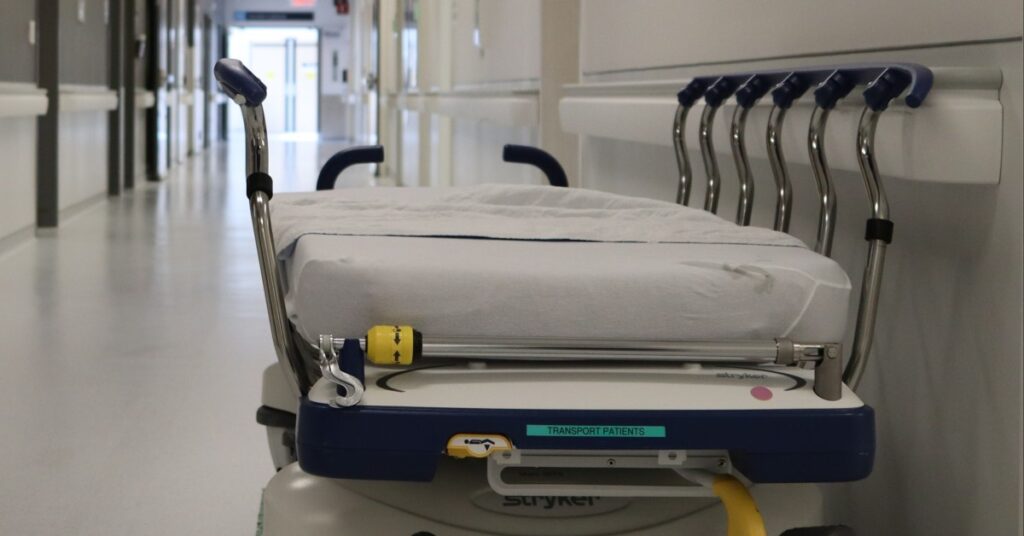
What Is the Epidemiological Triangle?
The epidemiological triad or triangle is an organized methodology used [...]

Think back to the last time you needed quick, trustworthy advice about a prescription. Unlike your physician’s office, which requires an appointment (or a long wait for a return phone call or email), a quick call connects you with an expert healthcare provider immediately—your pharmacist.
The scope of pharmacy practice grows each decade, especially as we head into another year of a global pandemic. Pharmacy Times predicts that in the next year, pharmacists will play an even greater role in delivering patient-focused care, navigating vaccinations, and managing new technology to streamline the payment process.
If you’re eyeing a career path in the pharmaceutical industry, you may be wondering about some common terms. In this article, we’ll help you sort through terminology in pharmacy education and how to determine which path is right for you. For example, we’ll cover:
A Doctor of Pharmacy (PharmD) is the professional degree required to become a pharmacist in the US. Practicing pharmacists complete an average of six years in school—including their pre-pharmacy education—before passing required exams and completing post-graduate training.
Here’s where things often get confusing. The word “pharmacist” is sometimes used in casual conversation to refer to healthcare professionals who aren’t technically licensed to be pharmacists.
For example, pharmacy technicians assist licensed pharmacists. They work behind the counter among the medications right alongside the pharmacist. However, they don’t need a Doctor of Pharmacy to do their job. A pharmaceutical sales representative typically needs four years of a bachelor’s degree with a foundation in chemistry and biology, though this is not always a requirement. Neither of these professionals is technically a pharmacist, although laypeople may mistakenly describe them that way.
And pursuing a PharmD doesn’t always mean you’ll work in a community pharmacy. In fact, just slightly fewer than half of all PharmD recipients end up in this role. Another 15 percent practice in other healthcare settings—hospitals, nursing homes, and managed care centers, for example. Other pharmacy students pursue research roles, government regulation positions, or work in highly specialized areas like oncology or geriatric pharmacy.
To help further dispel any confusion, let’s look at the relevant degrees that are not a Doctor of Pharmacy.
Following high school, students passionate about working in the health care system—but not positive about where they’ll land after graduation—can begin with a Bachelor of Science in pharmaceutical sciences.
This four-year program balances a mix of chemistry, biology, and the health sciences applicable to drug development and research. The University at Buffalo notes that its graduates go on to roles as consumer safety officers, drug analysts, and marketing representatives. They also may continue studying in graduate programs to become nurses, pharmacists or medical doctors.
Unlike the Doctor of Pharmacy, a PhD degree in pharmacological sciences deeply explores the rigorous research involved in drug development. These intensive programs prepare students specifically to work for the federal government, the pharmaceutical industry, or academic and research institutions.
The University Of Maryland’s program extends four years or longer, depending on the length of the thesis defense process. PhD progams may designate specializations. UMD, for example, offers concentrations in pharmacometrics, chemical and biology discovery, and translational therapeutics.
Within the wide field of pharmacy jobs, a master’s degree in pharmacology opens the door to various pathways without a doctorate. Northeastern University describes its program as one that covers “both the theoretical and applied aspects of pharmacology at all levels of biological organization, from the molecular to the living organism.”
The program takes two years to complete on a full-time basis, longer for part-time students. Graduates go on to work as medical writers, Big Pharma administrators, or teachers.
If you want to earn the title of licensed pharmacist, you’ll need a Doctor of Pharmacy. The program welcomes students directly undergraduate studies. In some instances, you can enroll in a six-year combined bachelor’s/PharmD program. A PharmD curriculum combines coursework on the complex science behind medications with instruction in the professional skills pharmacists need to meet the profession’s challenges.
A school of pharmacy incorporates experiential training to meet the requirements to sit for state exams as well as the North American Pharmacist Licensure Examination (NAPLEX).
Daydreaming about a white coat ceremony and working behind the local pharmacy counter? The PharmD is the higher education option for you. The program is intense and may require additional post-graduate training, but licensure opens up a wide range of career opportunities and high-paying salaries. While you will find a handful of online programs, the majority of PharmD degrees require an in-person element to graduate.
The PharmD track technically begins either in undergrad or in a pre-professional program that flows into the PharmD portion. When completed separately, students will study for between two and four years to meet prerequisite requirements, and then four years in the PharmD track itself. Many schools combine these two stages, resulting in a six-year program for licensure.
Butler University is a prime example of both the six-year and four-year format. Students can ensure that they’ve checked all the prerequisite boxes specifically required for Butler by being accepted into the pre-professional track. Courses include topics like biochemistry, cell biology, calculus, and human anatomy and physiology, and up to three courses may come from AP or IB high school courses.
You’ll also need a 3.0 GPA, at least a C- in the prerequisite courses, and the standard application, interview, and essay packet.
Butler University will launch an online PharmD program in the fall of 2022.
Admission outside of a school’s pre-pharmacy programs typically includes taking the Pharmacy College Admissions Test (PCAT) exams, completing transferable courses, and meeting competitive standards on your transcripts and resumes.
Unlike the research-focused PhD or the industry-wide master’s program, a PharmD focuses on the fine points of being a pharmacist. Students dive deep into the science of disease and treatment with modern medications and explore the business, regulatory, and ethical demands of the profession. They may specialize through elective courses and concentrations.
PharmD programs typically introduce experiential learning relatively early in the curriculum. Some programs commence fieldwork as soon as the second year. By the final year, students typically transition to full-time rotations.
Specialization is at the core of a PharmD program, even when students intend to take the most common path at the start of their studies. Many eventually work in community pharmacies. However, programs like Butler’s encourage rotations in the fourth year to expose students to the many facets of the pharmaceutical industry open to licensed professionals.
You will also have the option to pursue a dual degree in related areas like business, public health, or other medical professions. After graduation, students specialize further in professional residencies or research fellowships.
We’ve listed below PharmD programs that US News and World Report ranks among the top.
UNC at Chapel Hill’s Eshelman School of Pharmacy revamped its PharmD curriculum several years ago. Students now transition into immersive patient care work immediately after their first year. Students also can choose from a selection of specialized pathways including research and scholarship, rural pharmacies, or global pharmaceutical practice.
If you’re searching for the rare three-year PharmD program, UCSF offers a highly ranked pathway for express graduation. Students explore foundational and inquiry-based classes in their first two years and transition fully to advanced rotations by their third year. The program culminates in a group “discovery project” in your area of choice.
UM at Ann Arbor’s PharmD program directly collaborates with the University of Michigan Health system for advanced mentorship and residency opportunities. Over 60 percent of recent graduates went on to postgraduate studies. The school also stands out for its lower-than-average tuition and small class sizes.
UMN proudly notes its high employment rate within six months of graduation—as high as 97 percent. Students can customize their curriculum with a series of electives on specialized mental health or research-focused tracks. The school offers a series of dual-degree programs as well in areas such as business administration, public health, and health informatics.
Online PharmD programs strive to strike a similar balance between coursework and hands-on experience, but with fewer in-person requirements. Duquesne University, for instance, requires minimal in-person sessions in the first three years.
The fourth year requires a clinical immersion, but often leads directly to job opportunities. Some online PharmD programs will allow students to complete their rotations local to their area when possible, eliminating travel altogether.
As previously mentioned, Butler University will launch an online PharmD program in the fall of 2022.
Post-doctoral fellowships—specialized mentorship programs to obtain additional training and certifications—typically pay an average of $61,230, according to Glassdoor. Don’t be fooled by the comparatively low number—most fellows go on to six-figure salaries the moment they complete their final years of training. Where they go from here depends on their interest and career goals.
Here are a few popular Pharm positions and their average salaries:
Perhaps most importantly, pharmacists can continue to explore their interests as their careers progress. The American Society of Health-System Pharmacists (ASHP) and a range of similar organizations offer professional certifications in areas like informatics, opioid stewardship, teaching, or diversity and inclusion.
Questions or feedback? Email editor@noodle.com

The epidemiological triad or triangle is an organized methodology used [...]

A family nurse practitioner (FNP) provides comprehensive primary health care [...]

FNPs practice in a broad range of health care settings. [...]

Some epidemiologists assist pharmaceutical companies in developing safer medicines. Some [...]

Certifications certainly boost one's resume, demonstrating advanced proficiency in a [...]
Categorized as: Medicine, Nursing & Healthcare